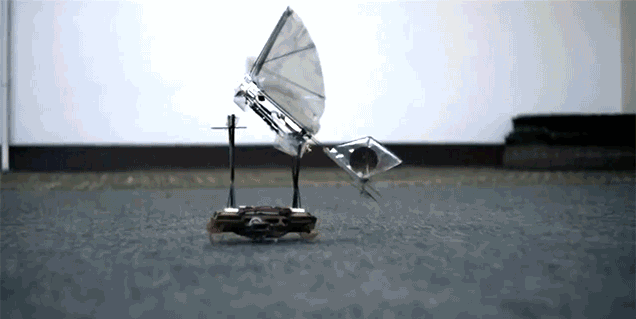Humanity wouldn’t be where it is today if we didn’t learn how to work together, but robots have once again demonstrated that they’re much faster at adapting than us because a robotic cockroach is now helping a robotic bird take flight without the need for a human to launch it.
UC Berkeley’s Biomimetic Millisystems Lab recently paired its speedy running VelociRoACH with its flying H2Bird ornithopter. And the matchup isn’t just about eliminating humans from the equation. Designing a robot that can both fly and crawl around on land is difficult, it ends up being heavy and slow and awkward in the air.
But by having two robots like this working together, it brings the best of both worlds to an autonomous explorer. The robotic cockroach can quickly clamber over uneven terrain, but when the ground becomes impassable, it can launch the robotic bird on its back which requires a certain take off speed before it can become airborne. And since the lightweight 13g H2Bird has limited battery life, its range can be maximised because the cockroach can deliver it closer to where it needs to explore. Now why can’t we work so well together?
